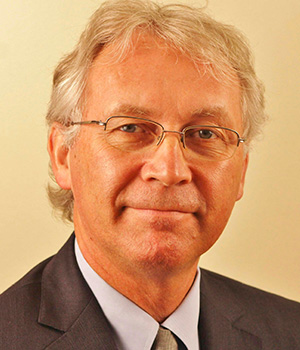Back to program
Grenville’s Growth Prospects for Exploration and Development of Critical and Strategic Minerals
Thursday, November 21, 2024
Room 303AB - SOQUEM
This conference session will address, from a geoscientific perspective, the technical and geological challenges as well as the opportunities for innovation in the exploration and development of Grenville’s critical and strategic minerals.
This session will be offered in French and in English.
9:00 a.m.
Welcome Address
9:05 a.m.
Critical and Strategic Minerals in the Grenville Province: State of Knowledge and Prospects
Conference details
The mineral potential of the Grenville Geological Province has long been considered low. However, the area has been an important centre for industrial mineral exploitation due to its geology, the nature of the rocks, the high metamorphic grades and its proximity to road and industrial infrastructures. Of the 28 critical and strategic minerals (CSMs) on the Quebec list, 16 are found in Grenville showings, deposits or mines. These are copper, zinc, nickel, cobalt, platinum group elements (PGEs), vanadium, rare earths, niobium, tantalum, scandium, graphite, titanium, manganese, high-purity iron ore, apatite (phosphate) and high-purity silica.
The Grenville Province is home to five active CSM mines, one dormant mine and one mine in development that produce six (6) critical and strategic minerals and elements. The high-purity Mont-Wright and Fire Lake iron ore mines, located in the Fermont region, are the metamorphic equivalents of the Paleoproterozoic iron formations of the Labrador Trough, deformed and metamorphosed to the amphibolite and granulite facies. The massive hemo-ilmenite mine (iron ore and titanium) at Lac Tio is located in the Havre-Saint-Pierre Anorthositic Suite, north of Havre-Saint-Pierre on the Côte-Nord. Scandium is recovered from the metallurgical processing of titanium-enriched slag from the ilmenite in Lac Tio at Rio Tinto Iron and Titanium's operations in Sorel. At Petit-Lac-Malbaie, north of Baie-Saint-Paul, the silica operation constitutes the only high-purity quartz mine in Quebec. The Lac-des-Îles graphite mine, located in the Upper Laurentians, has stopped production for the past several years. The Mattawinie graphite mine, located in Lanaudière, is in the development phase. Both these mineralizations are located in highly metamorphosed Mesoproterozoic graphitic sedimentary rocks. Finally, the Niobec mine has been mining a niobium deposit in post-Grenvillian carbonatite since 1976.
In this presentation, we will discuss the geological contexts of these substances as well as those of nine other CSMs in the Grenville Province.
9:25 a.m.
The Origin and Evolution of Rare Earth Element (REE) Mineralization in the Kwyjibo Magnetite-Apatite Deposit, Northeastern Grenville Province
Conference details
The Rare Earth Elements (REE) are essential to the global energy transition, serving as key components in wind turbines, fuel cells, and electric vehicles. Iron-Oxide-Apatite (IOA) deposits, although historically exploited for their substantial iron reserves, have recently garnered interest for their potential to host economic REE concentrations. The genesis of IOA deposits, however, remains a subject of considerable debate, with no single model adequately explaining their formation. Moreover, the processes responsible for REE concentration in REE-rich IOA systems are seldom addressed and poorly understood.
The Kwyjibo IOA deposit, located 120 km NE of Sept-Îles in the Allochthonous Belt of the Eastern Grenville Province, hosts important REE mineralization, with reported resources of 6.92 Mt at an average grade of 2.72% total rare earth oxides. This makes it the largest known IOA-hosted REE deposit in the world and an ideal deposit in which to investigate the processes responsible for concentrating the REE to economically significant levels in iron-oxide-apatite systems.
We propose that the Kwyjibo iron-oxide apatite rocks are coeval with the ~1.17 Ga Canatiche leucogranite, which hosts them, and were emplaced during the Grenville Orogeny. Bulk-rock compositions and Sm-Nd isotopic data suggest that the Canatiche leucogranite formed through fractional crystallization of a mantle-derived magma in an extensional tectonic environment, with limited crustal contamination. The magnetite-apatite rocks are interpreted to be magmatic, a conclusion supported by preliminary iron isotope data, and to represent early cumulates from this Canatiche magma. A subsequent, lower-temperature hydrothermal event during the Rigolet Phase of the Grenville Orogeny (~980 Ma) mobilized REEs in the apatite and enriched them to economic concentrations as britholite, ferriallanite, andradite and titanite.
These findings illustrate the magmatic-hydrothermal evolution of the Kwyjibo deposit and establish a genetic link between REE-rich IOA deposits and mantle-derived A-type granites. The study also underscores the challenges faced in deciphering ore deposit origin and evolution in highly metamorphosed terranes. Understanding these processes is essential for optimizing the exploration for IOA-hosted REE mineralization within the Grenville Province and in other geologically similar regions.
9:45 a.m.
Arianne Phosphate – Update on the Lac à Paul Mining Project
Conference details
Arianne Phosphate Inc., a mining company headquartered in Saguenay, Quebec, is developing a phosphate production project in the Saguenay-Lac-Saint-Jean region. Arianne is the proprietor of the Lac à Paul phosphate deposit, a fully permitted and construction-ready project situated 200 km north of the city of Saguenay. This asset represents one of the world's largest undeveloped apatite deposits, with the potential to produce an environmentally friendly phosphate concentrate. Its high purity and low contaminant content make Arianne's phosphate suitable for use in the production of fertilizers, as well as specific applications such as human or animal food and lithium-iron-phosphate batteries.
10:20 a.m.
Grenville Tectonics: New Prospects for Exploration
Conference details
The Grenville Province is not typically renowned for its mineral potential. This perception is based on the apparent geological complexity of the region and the assumption that it is a slice of deep crust, composed entirely of high-grade metamorphic gneiss. However, recent studies have shown that the tectonics of the Grenville Province are no more complex than those of other orogens. Some of the results and hypotheses that enhance the appeal of this geological province for mineral exploration include:
- The last phase of the Grenvillian Orogeny was very important, resulting in extensive melting of the Archean crust.
- The presence of large domains that did not undergo Grenvillian metamorphism, some of which contain volcanic arcs. These domains are therefore part of the upper crust.
- A new tectonic hypothesis suggests the presence of a major suture zone cutting across the entire Grenville Province.
10:40 a.m.
SRQ: New Ni-Cu Discovery at Lac Brulé
Conference details
The Lac Brulé Ni-Cu mineralization was discovered by SRQ 50 km northwest of the former Renzy Mine, in the Upper Laurentians region of Quebec. The former Renzy Mine operated from 1969 to 1972. Mafic intrusive bodies host mineralization at both the Renzy Mine and Lac Brulé. Both sites present several striking similarities, including mineralogy, petrology and timing of emplacement.
The Lac Brulé area had never been prospected prior to SRQ’s involvement. In 2023 and 2024, the company drilled 28 holes totalling 7,252 m, delineating a 580 m by 100 m mineralized body approximately 120 m from the surface. An additional hole, drilled 6 km west of the original discovery, intersected 951 m of a magmatic intrusion including 740 m of undeformed magmatic pyroxenite in the “Target 900” sector. The magmatic intrusion continues at depth and can be traced at surface over more than 25 km. The shape of the intrusive complex was defined using the combination of magnetic surveys together with detailed geological mapping of more than 160 outcrops of anorthosite-leucogabbro and 25 outcrops of pyroxenite.
The Ni-Cu mineralization encountered is characterized by cumulate and aggregates of iron, copper and nickel sulfides: pyrrhotite, chalcopyrite and pentlandite, respectively. Pyrrhotite is the dominant sulfide with visible chalcopyrite. Pentlandite can be seen mixed with pyrrhotite. The textures of the sulfide mineralization vary from disseminated to semi-massive to massive (> 80% of sulfide material) displaying a net texture or brecciated sulfides between pyroxene and amphiboles. Thin massive sulfide horizons are intercalated and sometimes associated with garnet-rich xenoliths. This discovery strongly suggests a potential for additional mineralized units of large intrusive complexes.
The “Target 900” mafic intrusion is outlined by a strong gravitational anomaly measuring 3 km by 2 km, starting 600 m from the surface, and with a superposed electromagnetic conductor starting 500 meters from the surface, suggesting significant extensions at depth and laterally.
11:00 a.m.
Lac Tetepisca Graphite Project: A Geometallurgical Approach to Flake Size Prediction
Conference details
Graphite is an industrial mineral, meaning that its commercial value depends on its quality, particularly its flake size distribution. Since mineral deposits are never homogeneous, neither is the flake size distribution across the deposit. This variability needs to be compounded in the resource evaluation and mining plan, in order to optimize production in reaction to diverse client needs. This presentation will discuss the development of a predictive method for flake size distribution using drill core samples, and its impact on resource estimation.
11:20 a.m.
Closing Statement and End of Session







